On 15 March 1848, a rainy Wednesday dawned on Pest. Radical youth started gathering in the morning in one of the cafés, Pilvax on Uri Street (today 7 Petőfi Sándor Street) operated by János Fillinger of the rapidly developing trading city. Opened in 1838 as Cafe Renaissance, the place borrowed its name from Károly Pillvax (with the loss of an L), who operated the cafe between 1842 and 1846. Pilvax was the headquarters of the group that later became known as the Youth of March, among them were János Arany, Mór Jókai, Pál Vasvári, János Vajda and, of course, Sándor Petőfi.
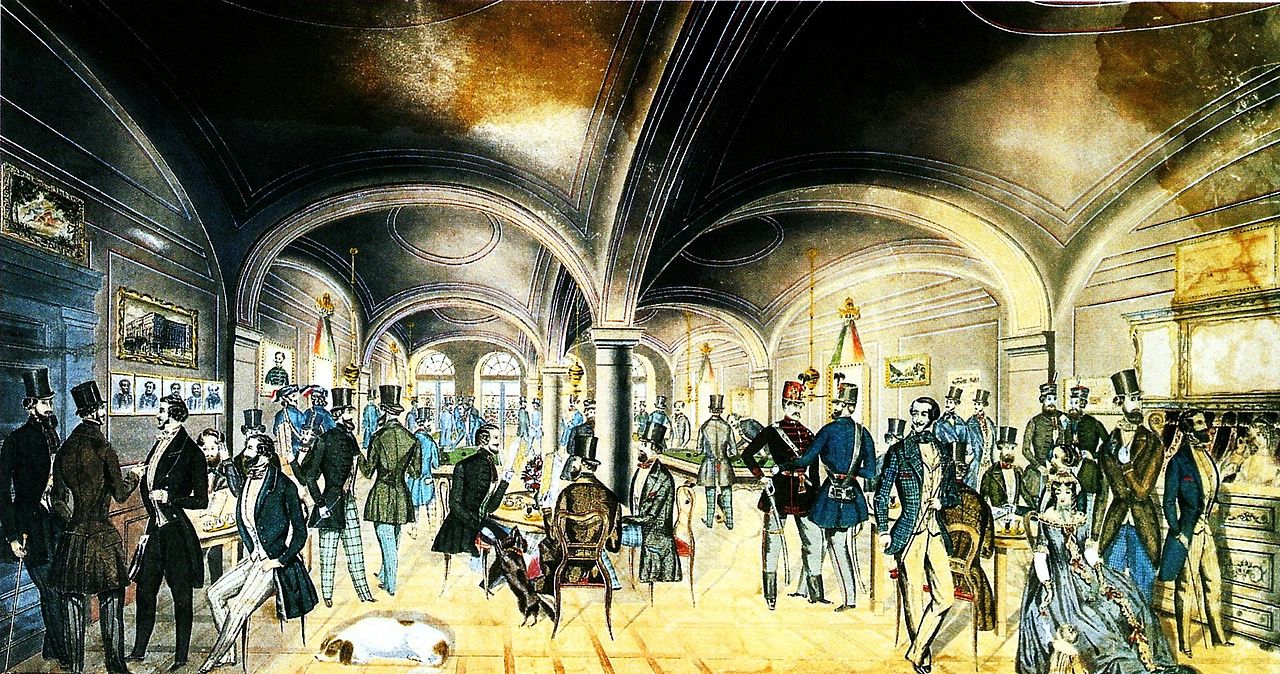 The Pilvax café was the regular place of the Youth of March, it was here that the 12 points were written, and Sándor Petőfi read the National Poem here for the first time (coloured pen drawing by József Preiszler)
The Pilvax café was the regular place of the Youth of March, it was here that the 12 points were written, and Sándor Petőfi read the National Poem here for the first time (coloured pen drawing by József Preiszler)
The young people prepared for the event in advance: Lajos Kossuth's speech in Pozsony [Bratislava] on 3 March (his address proposal for the National Assembly) played a major role in formulating the 12 points finalised in Pilvax, which summarised the opposition's proposals almost like a program, and by 15 March word also reached Pest about the Viennese uprising two days before. Petőfi, therefore recited the National Poem publicly here for the first time, in the revolutionary atmosphere of the café, and then they decided to enthuse the youth by marching to the universities.
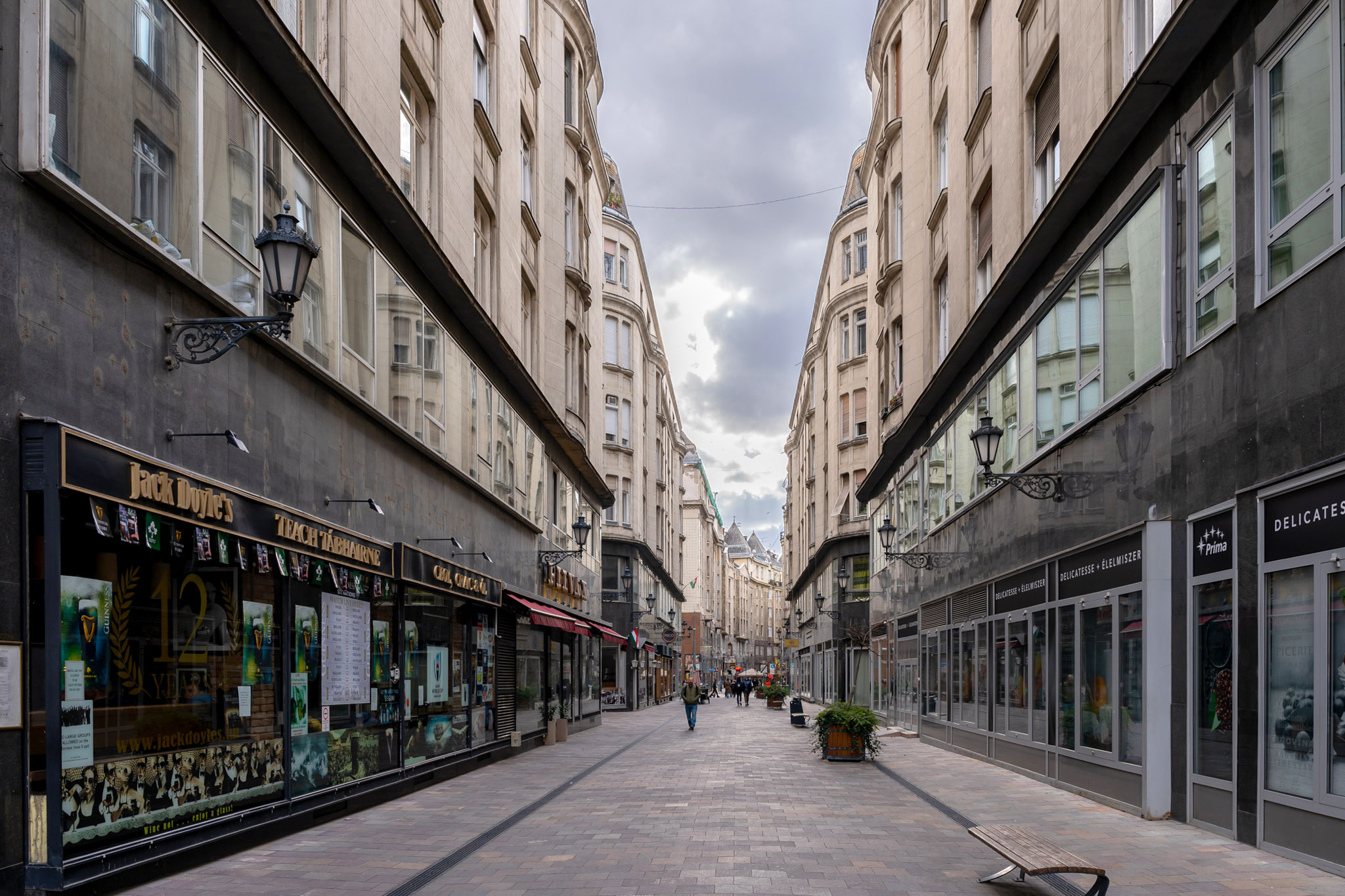 Their regular place, Pilvax, was also swept away by the urban planning of Pest, now a hotel stands in its place, but the name still preserves the memory of the once legendary coffee house (Photo: Balázs Both/pestbuda.hu)
Their regular place, Pilvax, was also swept away by the urban planning of Pest, now a hotel stands in its place, but the name still preserves the memory of the once legendary coffee house (Photo: Balázs Both/pestbuda.hu)
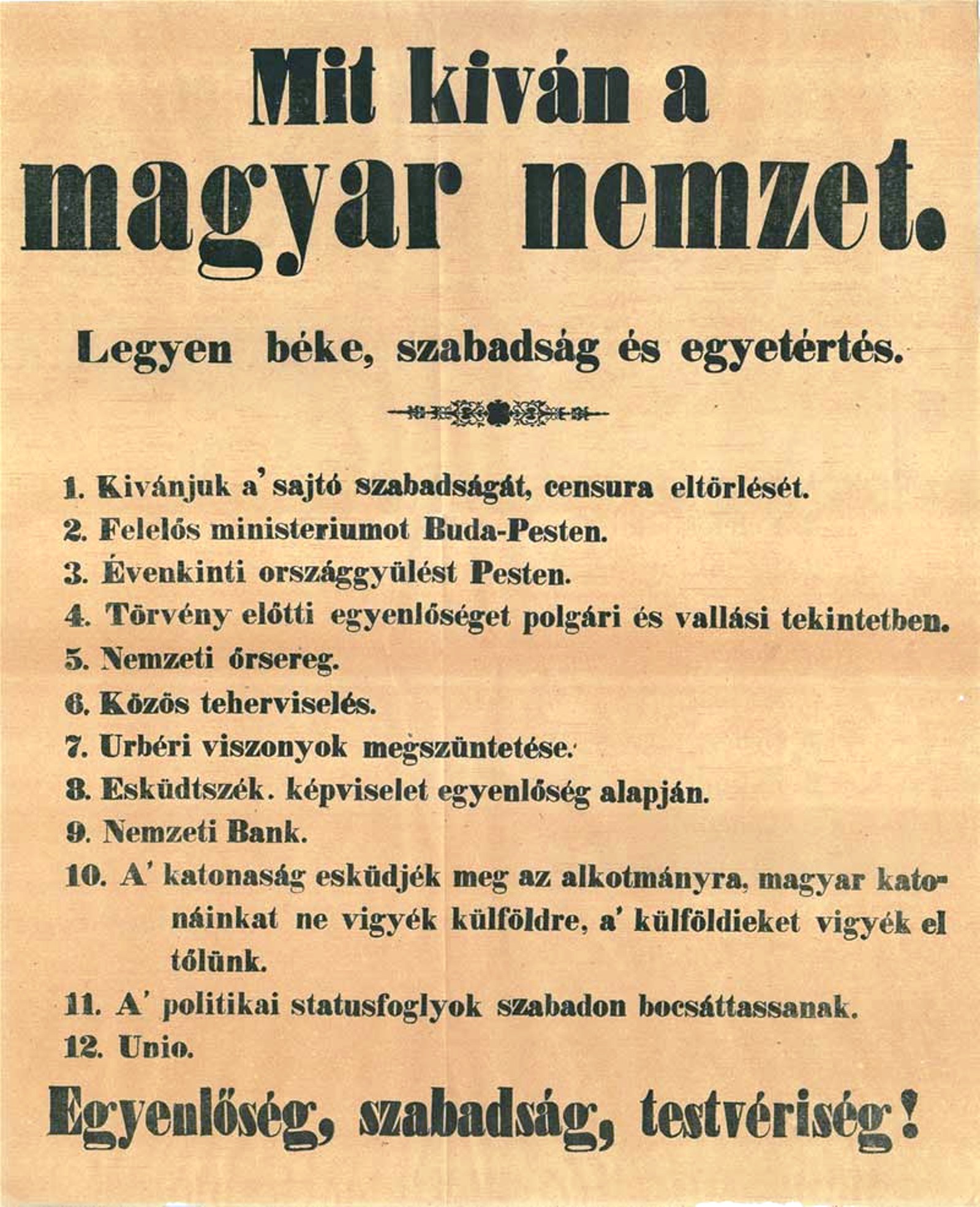
The 12 points summarised the main demands of the revolutionaries
Since everything in Pest at that time was close to each other, the universities were also only a few streets away: the medical university was located on the corner of what was then Egri Road and Újvilág Street (today Kossuth Lajos and Semmelweis Street), in the former building of the Jesuits. This house is no longer there, it was demolished along with most of the old Pest during the urban planning of the late 19th and early 20th centuries, and in its place today stands the historicising palace designed by Győző Czigler and completed in 1895, in which the Puskin Cinema operates.
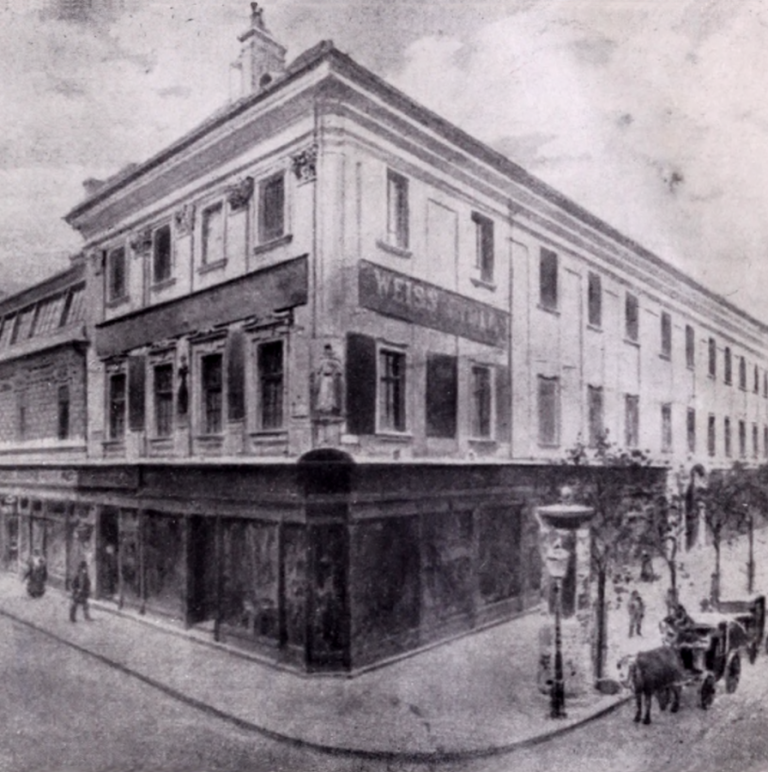
The former building of the Faculty of Medicine of the University of Pest at the corner of today's Kossuth Lajos Street and Semmelweis Street, the building was demolished during the urban planning of Pest (Source: Semmelweis University Central Archives)
After the medical faculty, the increasingly large group moved to today's Egyetem Square, where the law, humanities and engineering faculties of the Royal Hungarian University operated next to the church, in the former monastery of the Pauline Order. This house met the same fate as the Jesuit university building; the Neo-Baroque tenement palace still standing today, which was built according to the plans of Sándor Baumgartner and Zsigmond Herczeg, was inaugurated in 1900.
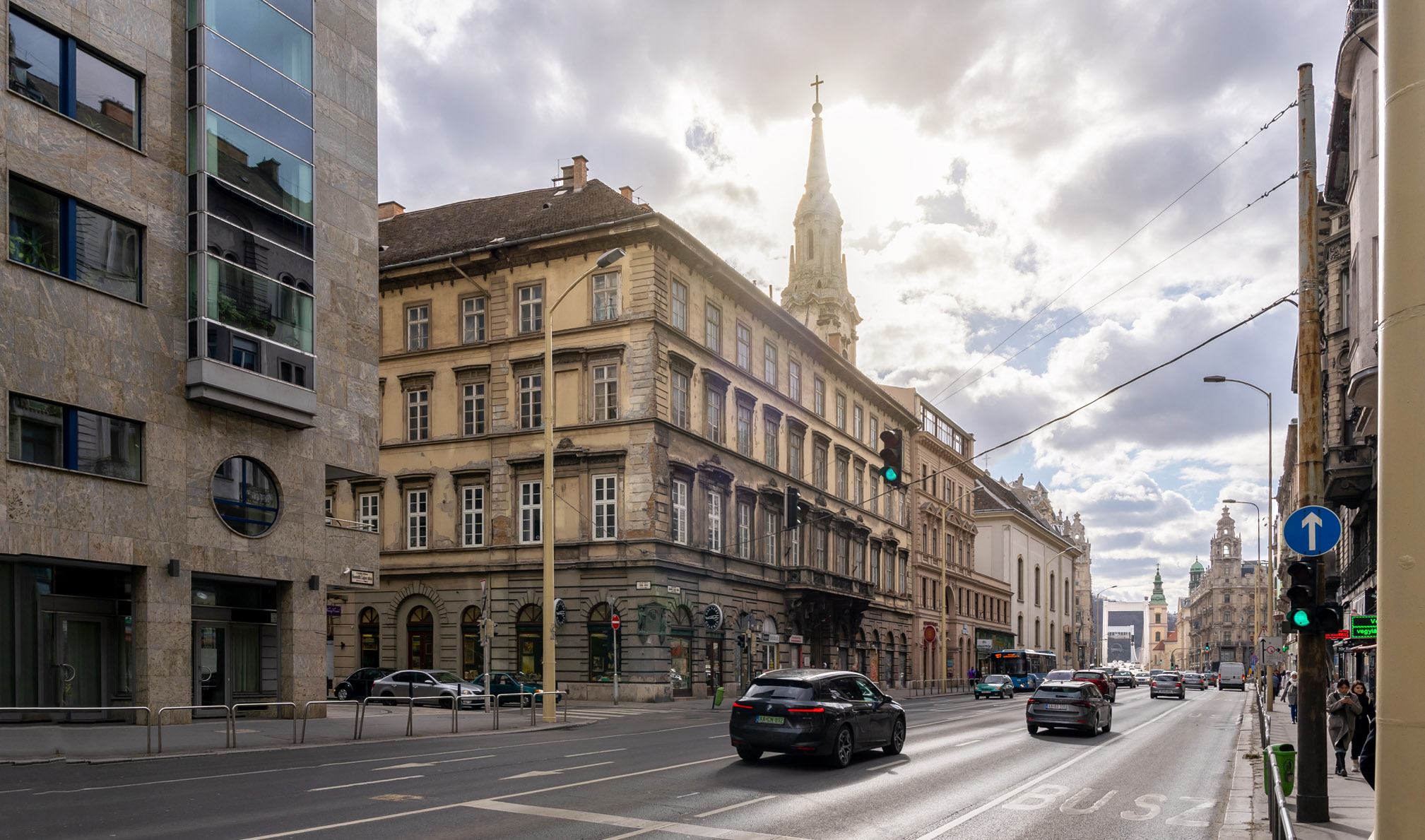
The building of the Landerer and Heckenast Printing House was remodelled in 1852 in a romantic style, the building still stands today in this form (Photo: Balázs Both/pestbuda.hu)
According to reports, the crowd, which by this time had grown to several thousand, then marched to the building of the Landerer and Heckenast Printing House. Rebuilt in 1852 in a romantic style, but still standing today, the house is a particularly important asset due to its history (and its famous residents, such as Lajos Kossuth, János Arany, Mihály Vörösmarty, the Jókai couple), although looking at it, it seems as if it has not been renovated since then, citizens can be grateful that it did not fall victim to the imagination of later city developers.
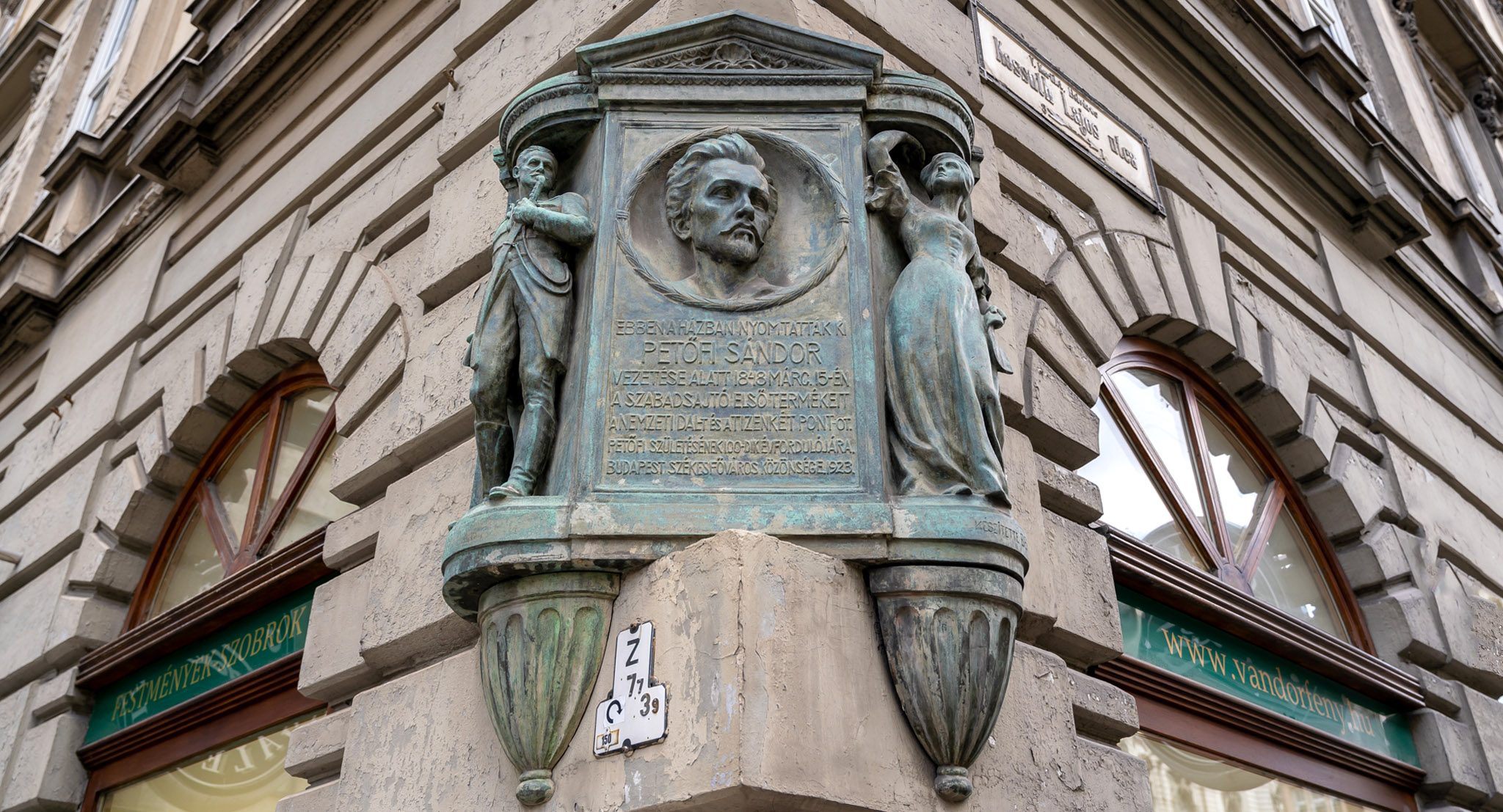
A beautiful plaque on the building of the former printing house recalls the revolutionary event that Petőfi and his companions had the 12 points and the National Poem printed here (Photo: Balázs Both/pestbuda.hu)
The arrival of the revolutionary crowd in the morning could not have caught Lajos Landerer by surprise, as he knew the Youth of March well, and according to the surviving sources, he called in all the workers of his printing press for that day, and even the paper was prepared in advance for printing. However, appearances had to be made, so Landerer first refused to allow the 12 points to be printed citing the lack of permission from the censorship, but then he himself whispered to Petőfi and his companions that they should seize a printing press in the name of the revolution. They did so, and soon the crowd waiting outside could get their hands on the first leaflets. Petőfi named the building the Szabadsajtó Udvara [Court of the Free Press] - today the name of the nearby Szabad Sajtó Road also preserves the memory of the event.
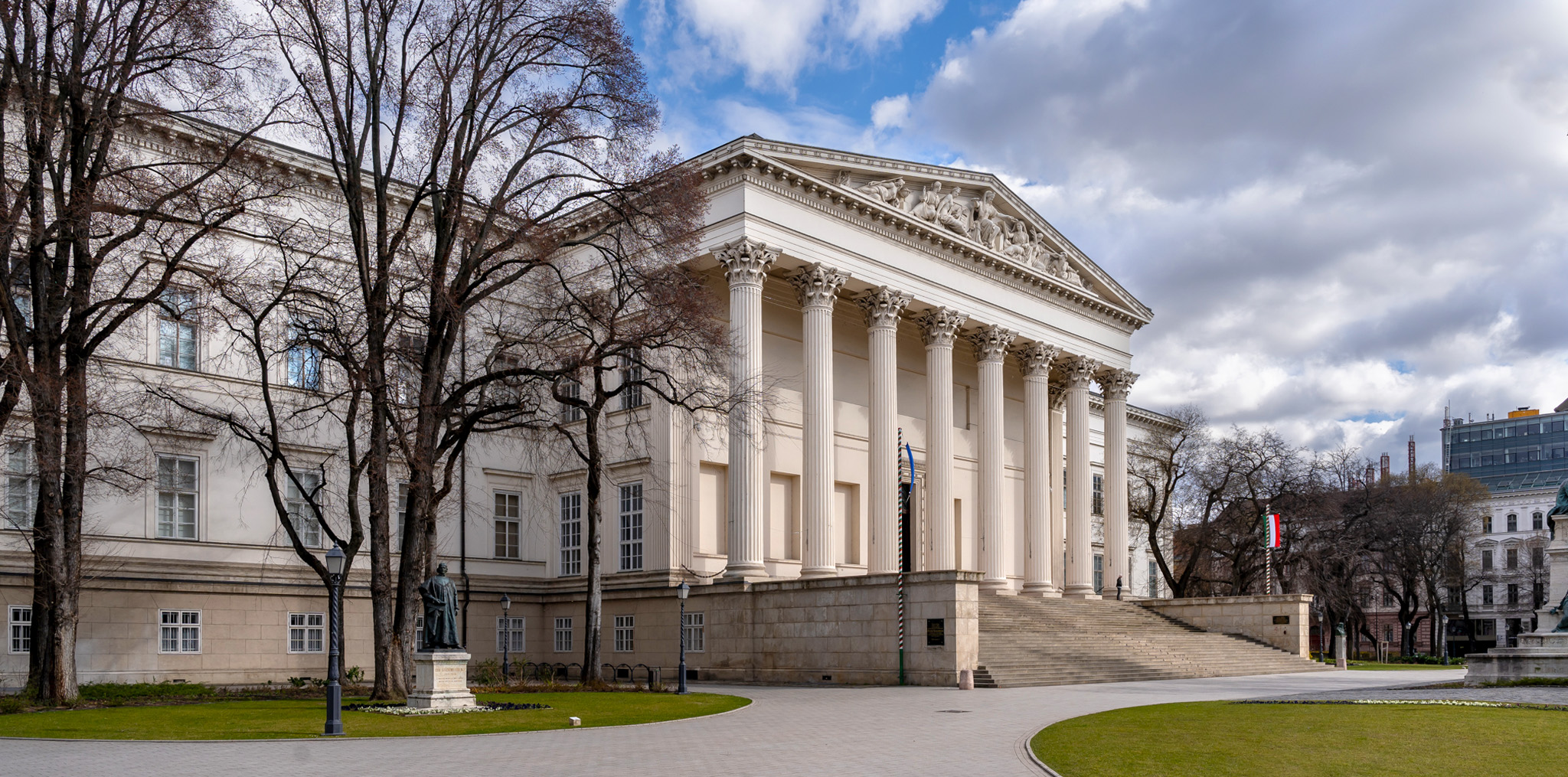
One of the emblematic locations of the revolution was the National Museum, but Petőfi never recited the National Poem from its steps (Photo: Balázs Both/pestbuda.hu)
Fortunately, one of the emblematic sites of the revolution can still be seen in its original form: the National Museum's classicist building designed by Mihály Pollack was still considered new in 1848, as it was fully completed barely a year earlier. Petőfi and his companions arrived here in the early afternoon: a crowd of several thousand gathered in the square in front of the building, despite the drizzling rain. Copies of the National Poem and the 12 points were handed out during the impromptu assembly, and after the inspiring speeches of Sándor Petőfi, Pál Vasvári and József Irinyi, their demands were accepted with a public outcry. However, despite popular belief and the inscription on the memorial plaque on the wall of the museum's staircase, Petőfi did not recite the National Poem here, so we are forced to refute this popular legend.
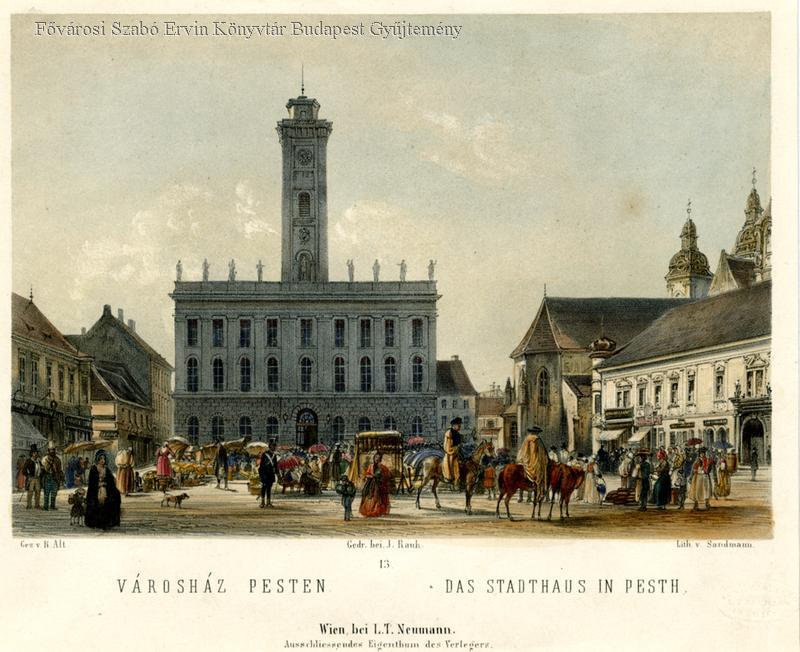
The revolutionaries had their demands accepted by the city council at the old Pest city hall (Source: Rudolf Alt/FSZEK Budapest Collection)
After the motion was accepted, the enthusiastic crowd marched to the old city hall of Pest to demand the acceptance of the 12 points from the city officials. It stood behind today's Inner City Parish Church, the former building, which was built in Baroque and then classicist style in several parts from 1702, is no longer there, it fell victim to urban development and was demolished in 1900 (some of its facade sculptures, however, still decorate an office today: they can be seen at the town hall's courtyard of the 1st District).
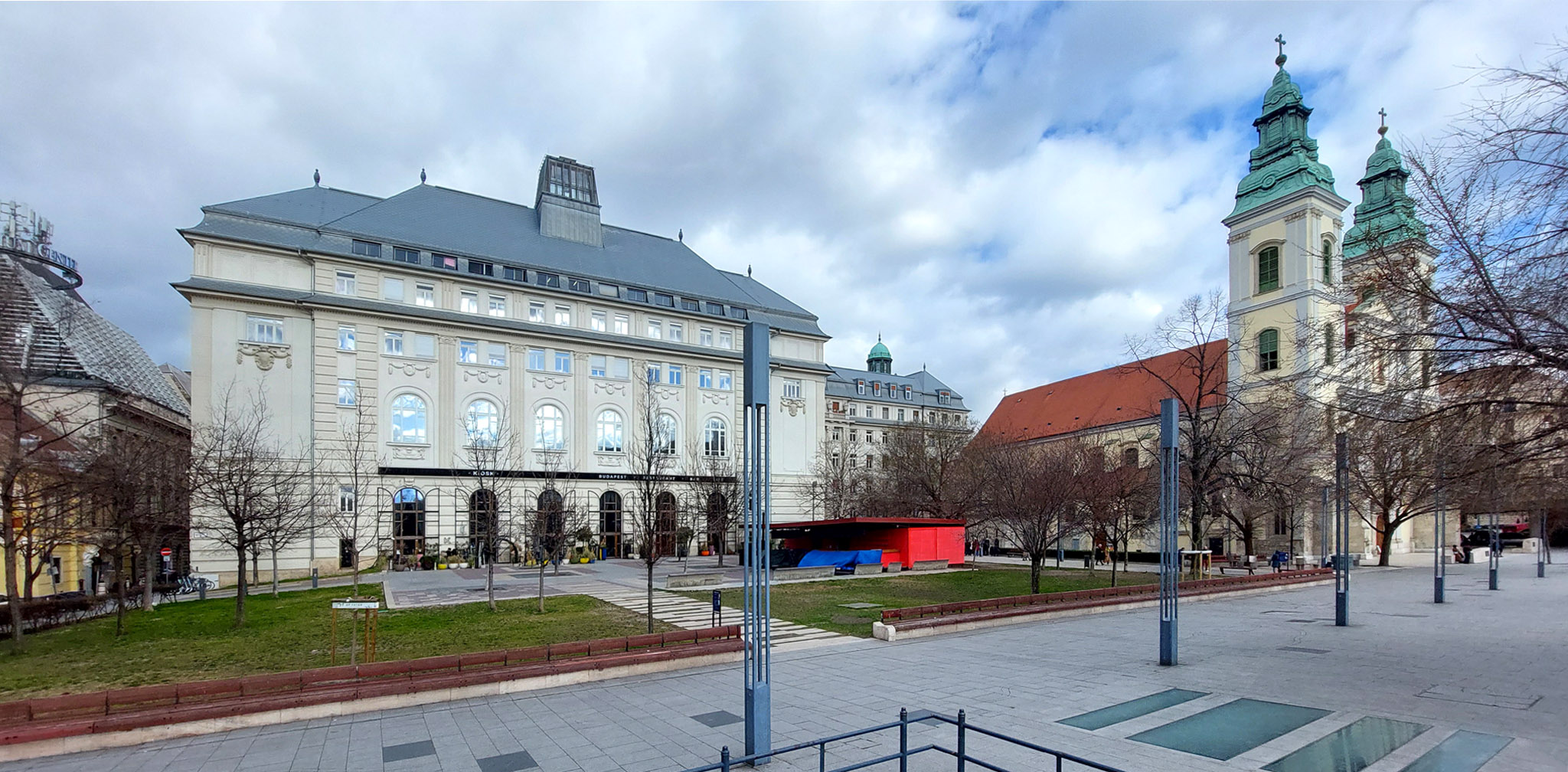
The old Pest city hall was demolished in 1900, and nowadays the Piarist block stands in its place (Photo: Balázs Both/pestbuda.hu)
The revolutionary crowd, therefore, gathered in the square in front of the city hall, where they handed over their demands, the 12 points to the authorities, and the councillors soon accepted them, and Deputy Mayor Lipót Rottenbiller showed the signed document to the cheering crowd through the window.
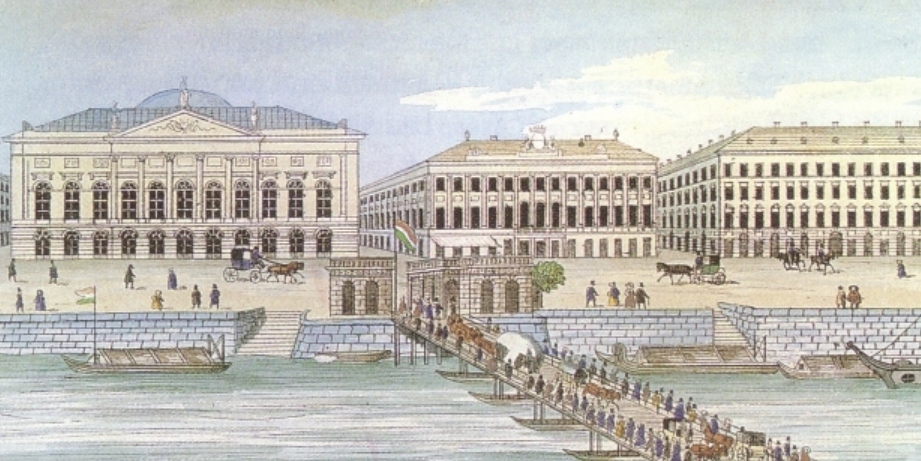
The crowd crossed to Buda on the pontoon bridge at today's Vigadó Square. Carl Vasquez's drawing of the bridge was made a decade earlier, in 1837 (Source: FSZEK Budapest Collection)
After the city council, the support of government bodies was demanded, but for this, the revolutionaries had to go to Buda, because the Helytartótanács [Locotenential Council] was based in the Buda Castle, in the building at 53 Úri Street. At that time, the only way to get to Buda was via a pontoon bridge, as the Chain Bridge was not yet finished, but despite the rain, the weather was on the side of the uprising, since if the winter lasted, due to the ice, without a pontoon bridge, crossing the river would have been impossible, so Petőfi and his companions reached Buda, the Castle, on the crossing starting from today's Vigadó Square.
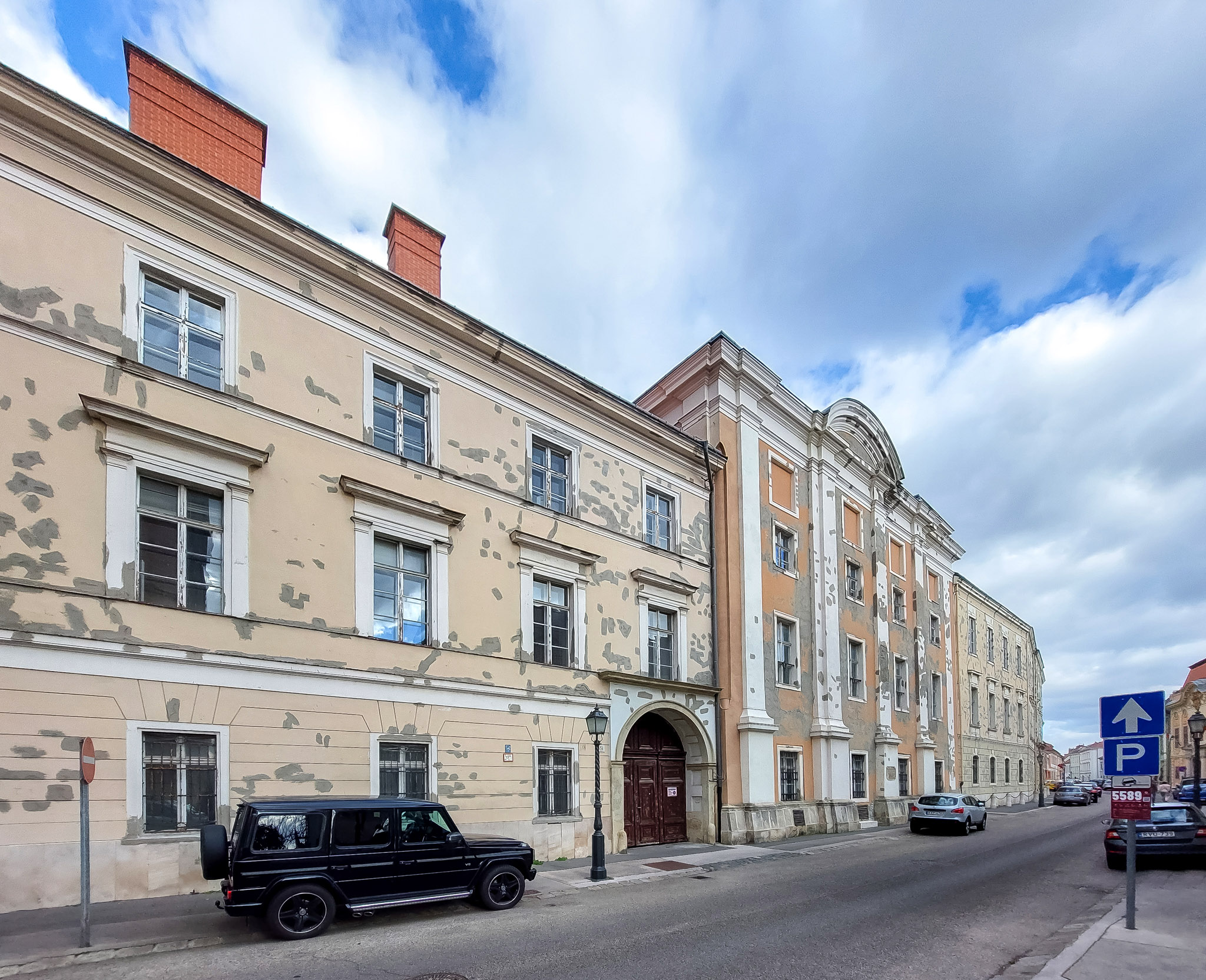
The building of the Locotenential Council in Budapest can still be visited at 53 Úri Street, the building later housed the Ministry of the Interior (Photo: Balázs Both/pestbuda.hu)
The building of the Locotenential Council, still standing today, whose core was a medieval church and a former Franciscan monastery, had operated here since 1795 (then replaced by the Ministry of the Interior from 1867 to 1945). The crowd's demands were finally accepted by the council, the points included the freedom of the press and the abolition of censorship, following which the revolutionaries demanded the release of Mihály Táncsics (then called Mihajlo Stančić), who was in prison for press offences.
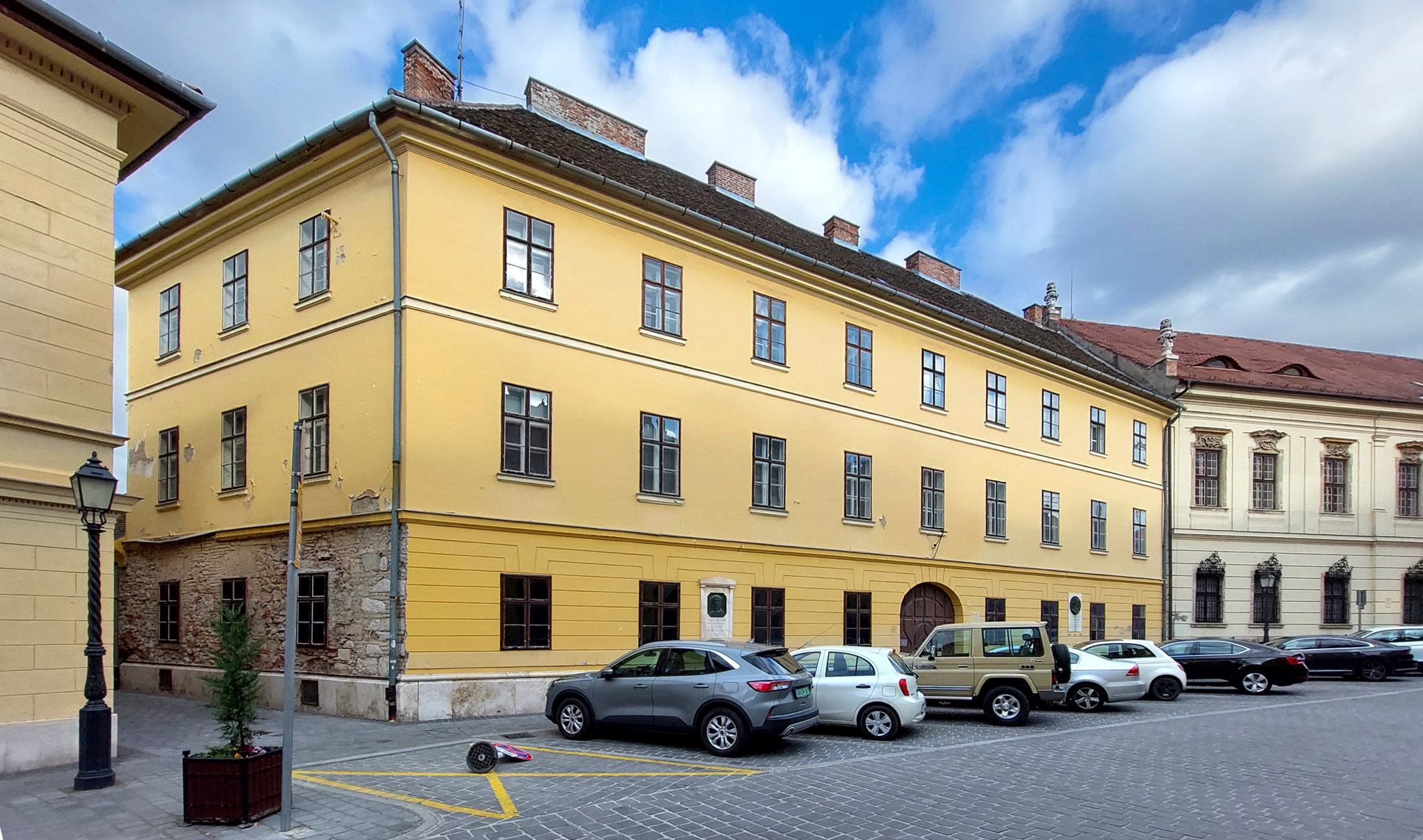
In addition to Mihály Táncsics, Lajos Kossuth was imprisoned in the József Barracks in the Castle, famous as the Táncsics-prison (Photo: Balázs Both/pestbuda.hu)
The writer was incarcerated in the nearby József Barracks at 9 Táncsics Mihály Street, just like Lajos Kossuth before. The freed Táncsics was considered a radical even among the radicals, in one of his writings, titled Fővárosunk [Our Capital] first published in 1867, for example, he proposed with noble simplicity the demolition of the entire Buda Castle down to the bottom of the bastion wall, explaining that "the banks of the Danube from Császárfürdő to Gellért Hill should be levelled and regulated with the hollows filled by the washed earth material." He added that the demolition would not cost much, since, as he writes, "the houses of private citizens are all old, small, shabby, built in a disorderly manner, aimless, and not worth much, so expropriating them all cannot cost an extremely large amount."
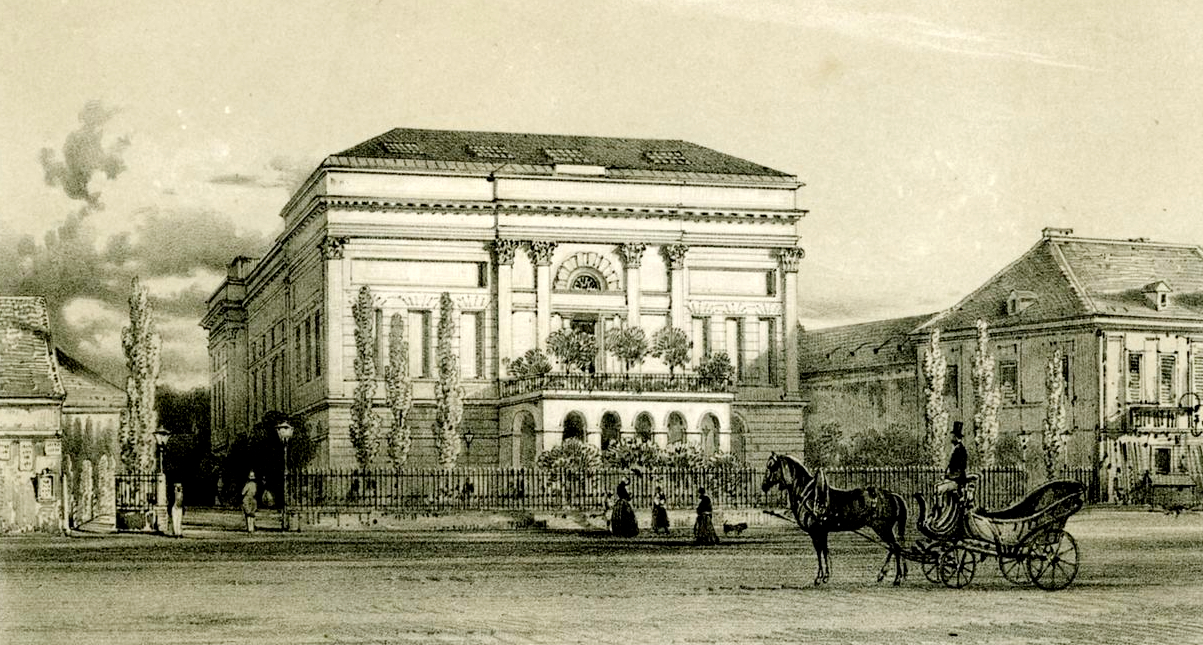
This is how the Youth of March could see the first Hungarian National Theatre, which stood at today's Astoria, on the site of the modern office building (Source: FSZEK Budapest Collection)
Fortunately, Táncsics' ideas did not come true later either, and the revolutionary crowd went back to Pest, to the National Theatre, together with the freed writer. The building located near today's Astoria, on Kerepesi (now Rákóczi) Road, was opened in 1837 as the Hungarian Theatre of Pest, it operated as the National Theatre from 1840, and on the night of the revolution, the play A Child of Two Mothers was to be performed, but as a result of the events, the directorate put József Katona's Bánk Bán (Bánk the Palatine) on the program. However, the performance was interrupted due to the arrival of the crowd fueled by intense emotions, so by popular demand, after the recitation of the National Poem, the Summons, the National Anthem and the Rákóczi-March followed, and then some songs from the legendary opera László Hunyadi.
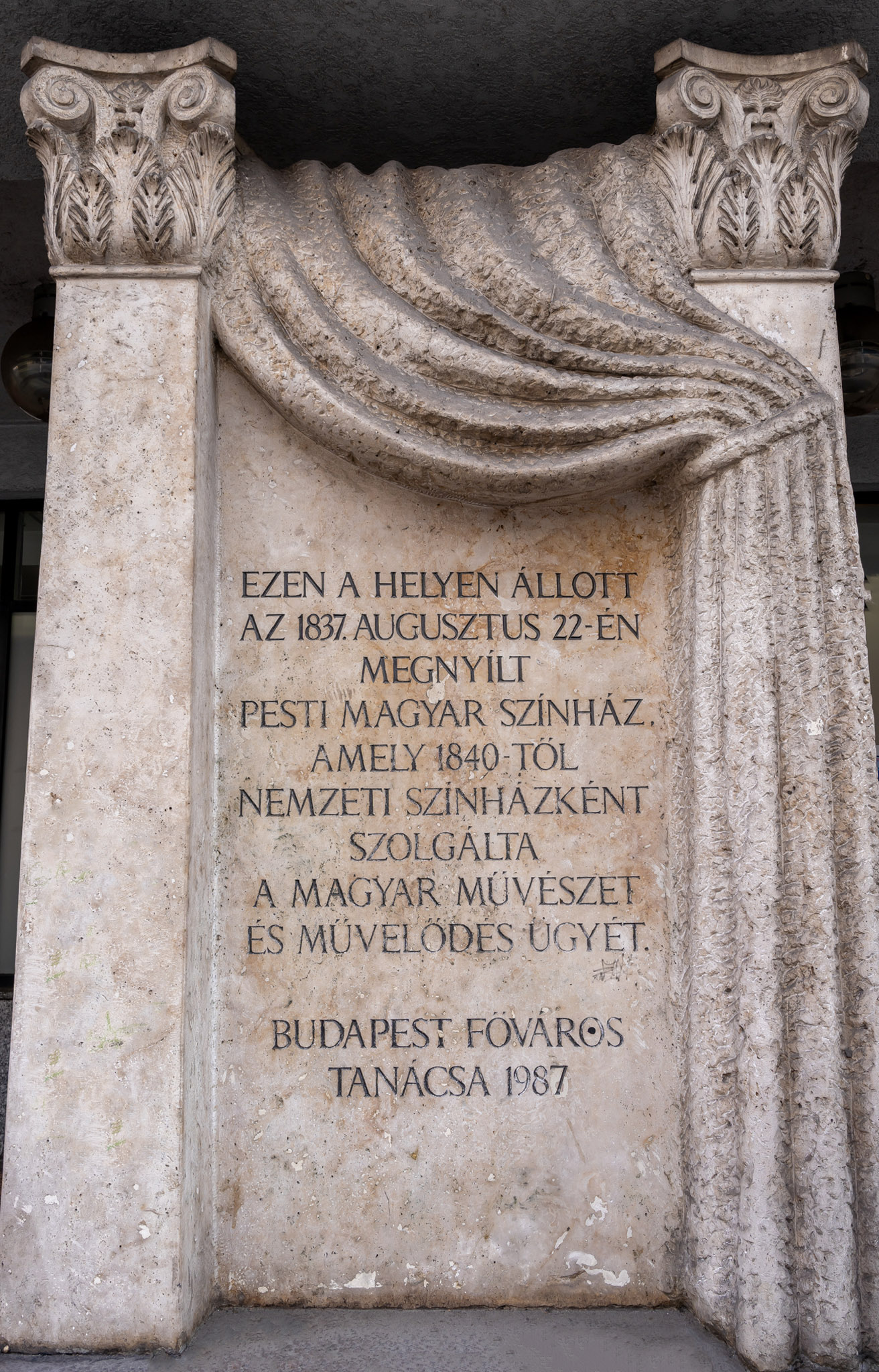
The location of the theatre is now only indicated by a plaque next to the bus stop (Photo: Balázs Both/pestbuda.hu)
It is still possible to still visit the sites of the first day of the 1848 revolution, reaching several buildings that Petőfi and his companions could have seen. And if we pin the cockade on our chest, let us remember that the significance of the revolution does not lie in whether it ultimately won or not, but in the effort that our predecessors made together to achieve noble goals.
Cover photo: Red-white-green flower decorations in front of the National Museum (Photo: Balázs Both/pestbuda.hu)

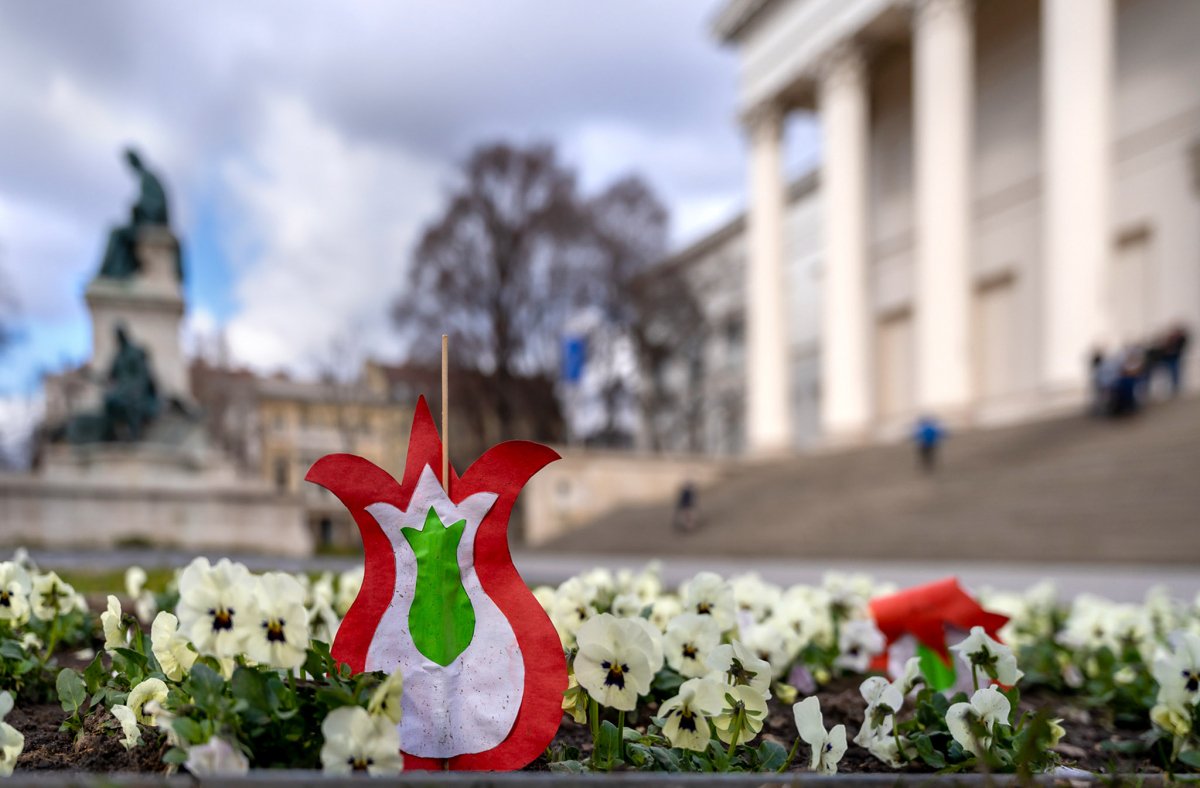

































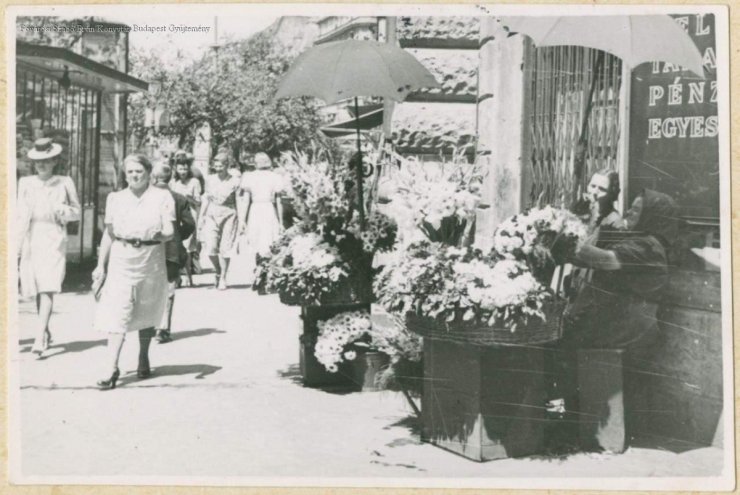
Hozzászólások
Log in or register to comment!
Login Registration